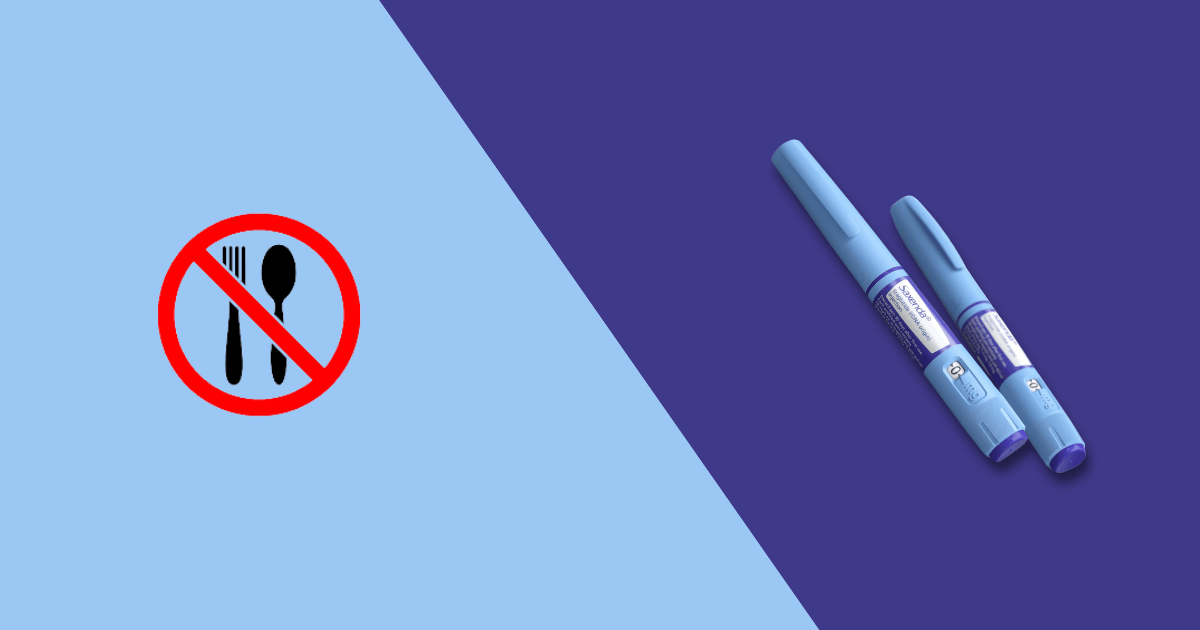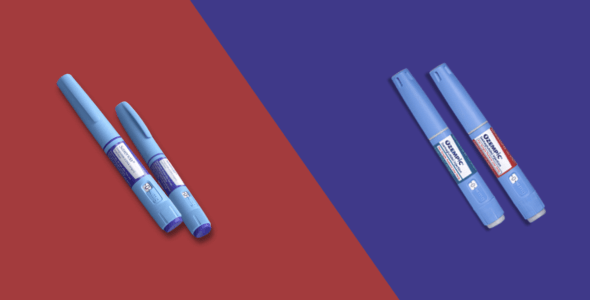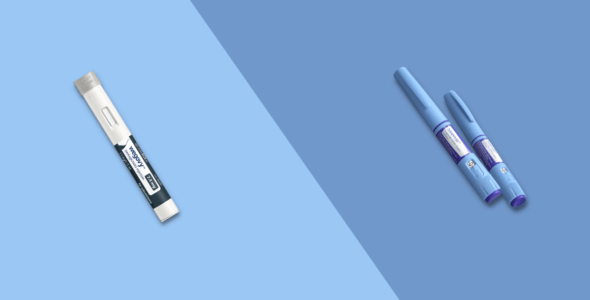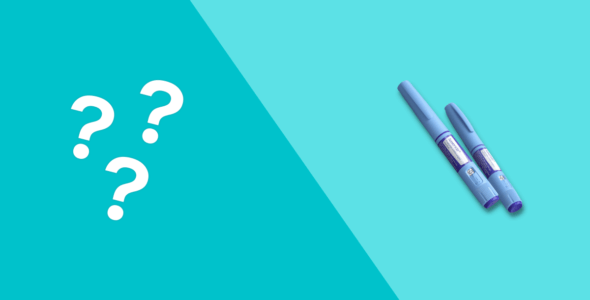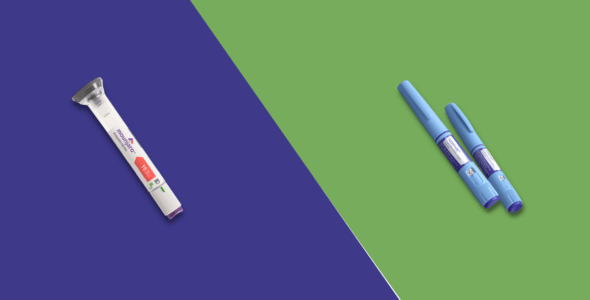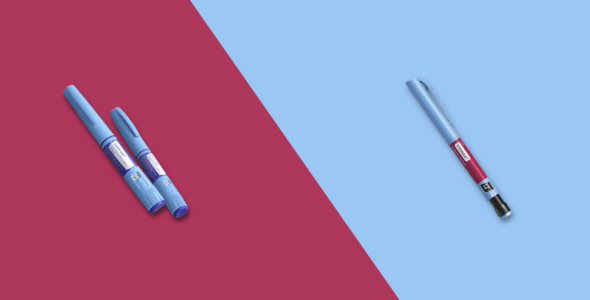What foods to avoid while on Saxenda
Table of contents
Saxenda is a once-daily injectable medication used to treat people who are overweight or obese with other weight-related medical problems. It belongs to a class of medications called glucagon-like peptide-1 (GLP-1) receptor agonists.
While there are no specific foods that you must avoid while on Saxenda, it is recommended to follow a low-calorie diet and increased physical activity.
What is Saxenda (liraglutide)?
Saxenda is an FDA-approved prescription injectable drug with the active ingredient liraglutide and is manufactured by Novo Nordisk. It helps people to lose weight and keep the weight off.
Chronic diseases like obesity usually require long-term treatment. Your doctor will help to create a specific plan that is customized to your weight-management goals.
Saxenda is not approved for the treatment of high cholesterol or high blood pressure.
How does Saxenda work?
Saxenda works by mimicking the hormone GLP-1 that your body naturally produces which is released after eating. GLP-1 signals the pancreas to produce insulin and also reduces hunger.
Saxenda addresses one of your body’s natural responses to weight loss. It works like GLP-1 by regulating your appetite, which may lead to eating fewer calories and losing weight.
Inject your dose of Saxenda under the skin in your stomach area (abdomen), upper arm, or upper leg (thigh), as instructed by your health care professional. Do not inject into a muscle or vein.
Saxenda is typically taken once a day at any time of day, without regard to the timing of your meals.
What are the most common side effects of Saxenda?
The most common side effects of Saxenda in adults are:
- nausea
- diarrhea
- vomiting
- constipation
- lower blood sugar (hypoglycemia)
- tiredness (fatigue)
- injection site reaction
- stomach pain
- headache
- dizziness
- change in enzyme (lipase) levels in your blood
Nausea is known to be the most common side effect when starting Saxenda and decreases over time with most people as the body gets used to taking Saxenda. If you experience nausea while taking this medication, here are a few tips that may help:
- eat low-fat, bland foods like tice, toast, and crackers
- eat foods containing water such as soups and gelatin
- avoid eating larger meals and instead eat smaller amounts more frequently (using smaller plates may help to reduce portion sizes)
- take frequent sips of water
- don’t lie down after finishing to eat
- avoid wearing tight clothing
- go outside for fresh air
There are also several known serious side effects of Saxenda which are less common:
- increased risk of thyroid tumors
- pancreatitis (inflammation of the pancreas)
- severe hypoglycemia (low blood sugar levels)
- increased heart rate
- kidney problems (kidney failure)
- gallbladder problems
- anxiety
- insomnia
- serious allergic reactions
- suicidal thoughts
Other serious side effects may happen while taking Saxenda such as thyroid tumors, including cancer. If you notice a lump or are swelling in your neck, have shortness of breath hoarseness or trouble swallowing, contact your healthcare professional for medical advice immediately as these are symptoms of thyroid cancer.
If you experience any of these side effects or experience an allergic reaction when taking Saxenda, call your healthcare professional or seek emergency medical attention right away.
What foods should I avoid while on Saxenda?
While there are no specific foods that you are required to avoid eating while on Saxenda, you should follow a healthy low-calorie diet plan as part of your treatment plan. You should also increase your physical activity and try to avoid:
- processed foods
- sugary drinks
- fast food
- alcohol
- foods with high levels of salt
- foods high in saturated and trans fats
If you have any questions about what foods to avoid while on Saxenda, talk to your healthcare professional or speak to a dietitian about setting up a diet plan that is right for you.
What are the best foods to eat with Saxenda?
While there are no specific foods that you need to eat with Saxenda, in general, you should eat a healthy low-calorie meal plan that includes:
- fruit and vegetables
- potatoes, bread, rice, pasta, and other starchy foods (wholegrain)
- some meat, fish, eggs, beans, and other non-dairy sources of protein
- some milk and dairy foods
- small amounts of food and drinks that are high in fat and sugar
Who can take Saxenda?
Saxenda may help some adults who have excess weight and also weight-related medical conditions (such as high cholesterol, high blood pressure, or type 2 diabetes), or obesity, to lose weight and keep the excess weight off.
Saxenda is used in combination with a reduced-calorie diet and increased physical activity for chronic weight management in adults with a body mass index (BMI) of 30 kg/m2 or greater (obesity), in adults with a BMI of 27 kg/m2 or greater (overweight), and in children with obesity that are within the age 12-17 years with body weight that is above 132 pounds (60 kg).
You should not take Saxenda if you:
- are under the age of 18
- if you or any of your family have ever had MTC, or if you have an endocrine system condition called Multiple Endocrine Neoplasia syndrome type 2 (MEN 2).
- allergic to liraglutide or any of the ingredients in Saxenda
- are pregnant or planning on becoming pregnant
Before you start taking Saxenda, tell your doctor about all of your medical conditions, including if you:
- are taking any GLP-1 receptor agonist medicines
- have or have had any problems with your pancreas, liver or kidneys
- have severe problems with your abdomen, including slowed emptying of your stomach (gastroparesis) or if you have problems digesting food
- have or have had suicidal thoughts, depression, or history of any mental health issues
- are breastfeeding or planning to breastfeed.
Can I take Saxenda with other medications?
Saxenda is not approved for the treatment of type 2 diabetes and should not be used with any other GLP-1 receptor antagonists, insulin, or Victoza. Saxenda can be used with some other diabetes treatments. It is not known if it is effective and safe to use Saxenda with other prescription drugs, over-the-counter medications, supplements, or herbal products for weight loss. Speak with your doctor about any possible drug interactions with Saxenda and the other medications you are taking.
Medically reviewed
A medical professional has reviewed this article.


Jamie Winn, PharmD
Jamie Winn, PharmD
Dr. Jamie Winn received his Doctor of Pharmacy in 2002 from the University of South Carolina College of Pharmacy, Columbia, SC. Jamie is a medical reviewer for NiceRx.

